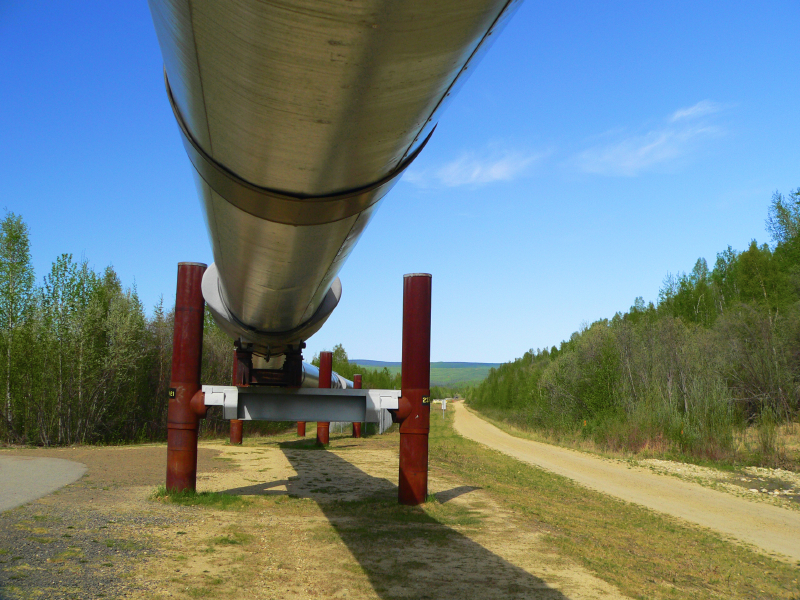Falling oil prices, revenue forecast paint gloomy picture for Alaska

The international oil market held more bad news for Alaska on Wednesday as prices fell to near $60 per barrel, while the state released its major annual report on revenue expectations — showing a one-year decline in oil revenue of more than $2.7 billion.
Bank of America said a price of $50 per barrel is possible in the short term, while Morgan Stanley said it could go even lower.
The market decline Wednesday further clouds the outlook for Alaska’s finances in the coming fiscal year, with a budget deficit of $3.5 billion or more expected if oil prices average $65 until next July.
The rapid collapse in prices since this summer, triggered by what some say is the inability of the OPEC cartel to control the market and the growth in Lower 48 production, is reflected in the forecast from the state Department of Revenue released Wednesday.
The report said oil production in the state is expected to remain above 500,000 barrels a day for the next three years, while prices are likely to stay down, then rebound.
The state said prices in the fiscal year starting next July are expected to be $66, down more than $40 from previous forecasts. Over the longer term, the department expects prices to climb to about $90 in fiscal year 2017.
2014 production
In 2014, production sat at an average of 531,000 barrels per day. In fiscal year 2015, that number is expected to drop to 509,000 barrels, before climbing back up to 534,000 barrels by 2017. But that small gain may be short-lived; the report estimates that production will drop again in 2018 to an average of 503,000 barrels per day.
The state received a total of $17.2 billion in the fiscal year that ended last summer, the second highest in history. For the current fiscal year, the state expects a drop to $10.1 billion, and $9.9 billion in fiscal year 2016.
Unrestricted petroleum revenue is now expected to drop from $4.7 billion in the last fiscal year to $2 billion this fiscal year and $1.6 billion in the fiscal year that starts next July. The oil revenue drop from last fiscal year to this year is expected to be 58 percent.
The biggest drop is expected in the production tax, which totaled $2.6 billion last fiscal year and is expected to be nearly 90 percent lower in fiscal year 2016, at $308 million. The decline is largely a function of lower prices and higher expenses under a net profits system, not the change in oil taxes from the previous structure, known as Alaska’s Clear and Equitable Share, to the new structure, most commonly known as SB 21.
If oil prices continue to slide beyond the lower levels in the state forecast, state revenue would drop by a few hundred million dollars or more. If the average oil price this year dipped to $60, which would take another big drop in market prices to offset the first few months of the year when oil was $100, state revenue would drop by about $400 million more.
Long-term outlook
For the past few years, the department has said a long-term outlook for prices above $100 seemed reasonable for the next decade, but conditions have changed in the last three months.
While both ConocoPhillips and BP have announced cutbacks this week on spending plans for next year around the world, there have been no specific announcements about Alaska projects.
For Alaska, the decline has triggered the minimum gross tax, installed as part of SB 21 in an effort to prevent production taxes going to zero with the subtraction of credits. Under the old tax system, ACES, there was also a 4 percent floor, but the companies could have reduced their taxes below that level at low prices by taking a credit on capital expenditures that could have cut the tax to close to zero.
The debate in the Legislature in 2013 over the minimum tax dealt with whether 4 percent was sufficient. In the latter days of the Economic Limit Factor system a decade ago, the gross tax rate was 7.1 percent.
The taxes on so-called “new oil,” such as that expected from Point Thomson on the North Slope, are likely to be close to zero at today’s prices, analysts say, because of credits that can be applied. That oil is not subject to the 4 percent minimum.
In a plan to raise the level of the minimum gross tax last spring, Sitka Sen. Bert Stedman said the “state’s exposure increases as oil prices drop.” The Legislature took no action on his plan.
The oil price crash is also taking a toll in the Canadian province of Alberta, where the premier said budget cuts are on the way to deal with a potential decline of $7 billion.
That province is in a position analogous to Alaska, though it has a more diversified economy and it does not have the tens of billions in savings that Alaska has.
The Edmonton Journal reported that in his state-of-the-province speech, Premier Jim Prentice, who took over in September, said, “We will have to make some tough decisions and the impact will be felt in every corner of this province.”
He said it is a “price trough” brought on by “a conscious decision by OPEC and its members to overproduce.” OPEC supplies about one-third of the world market demand for oil.



